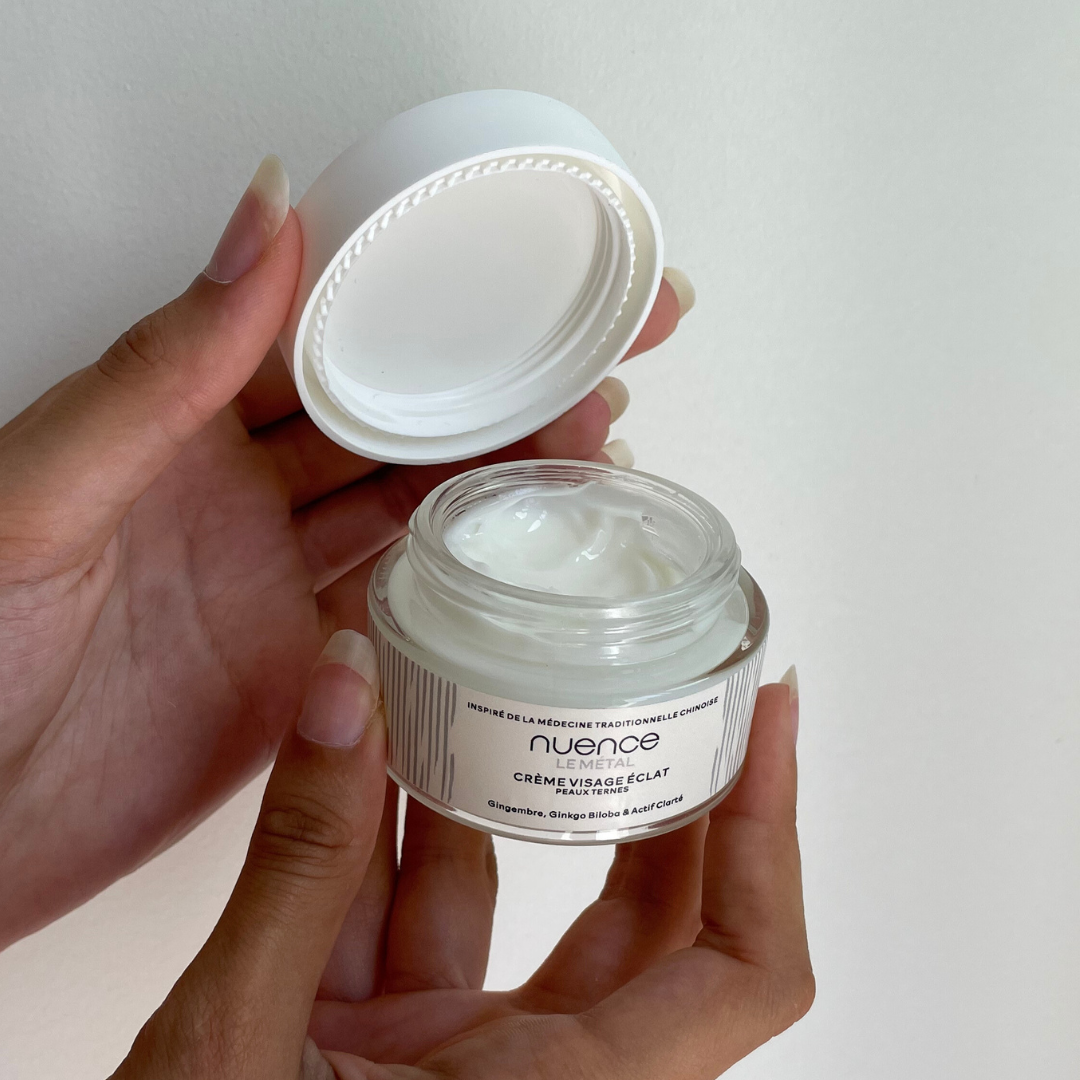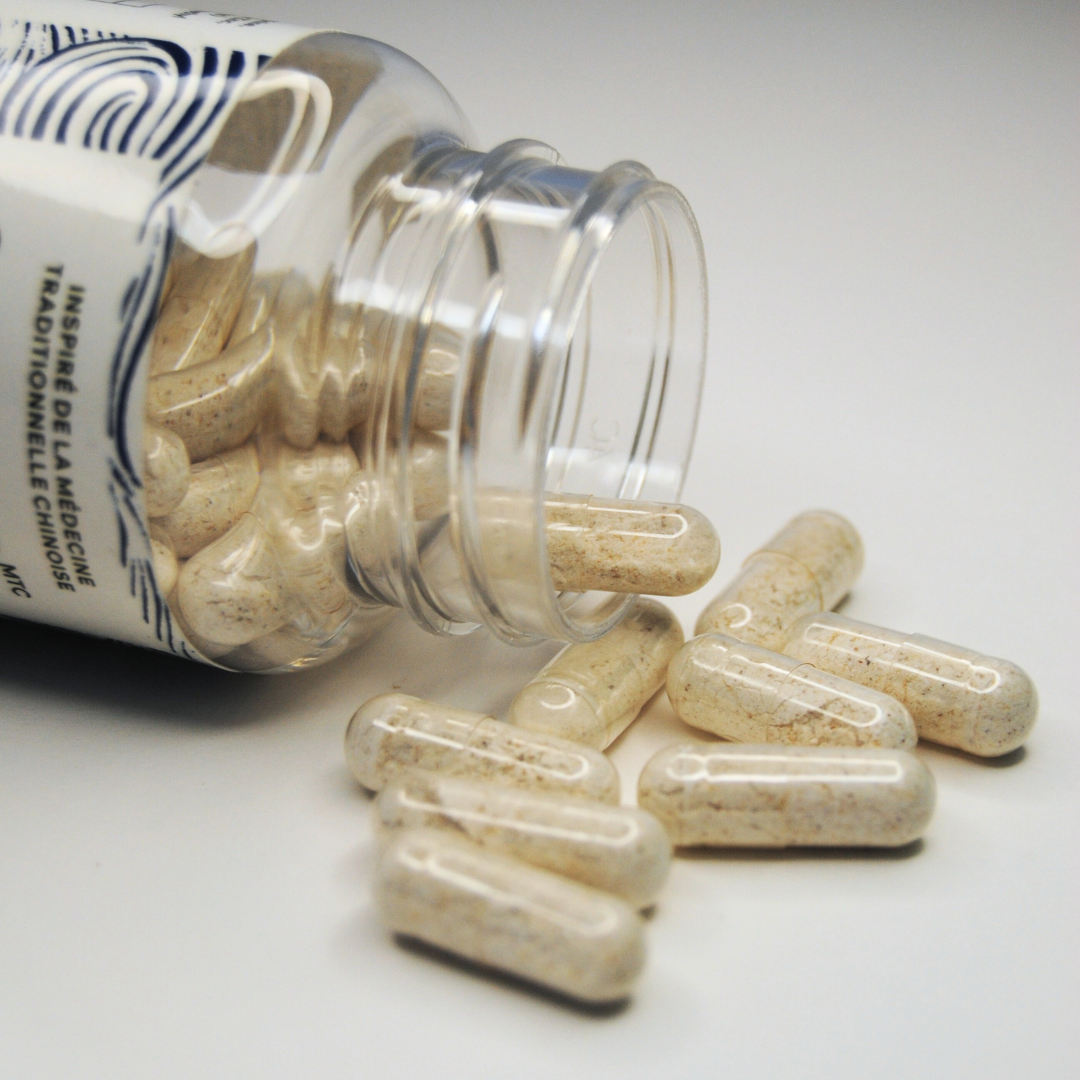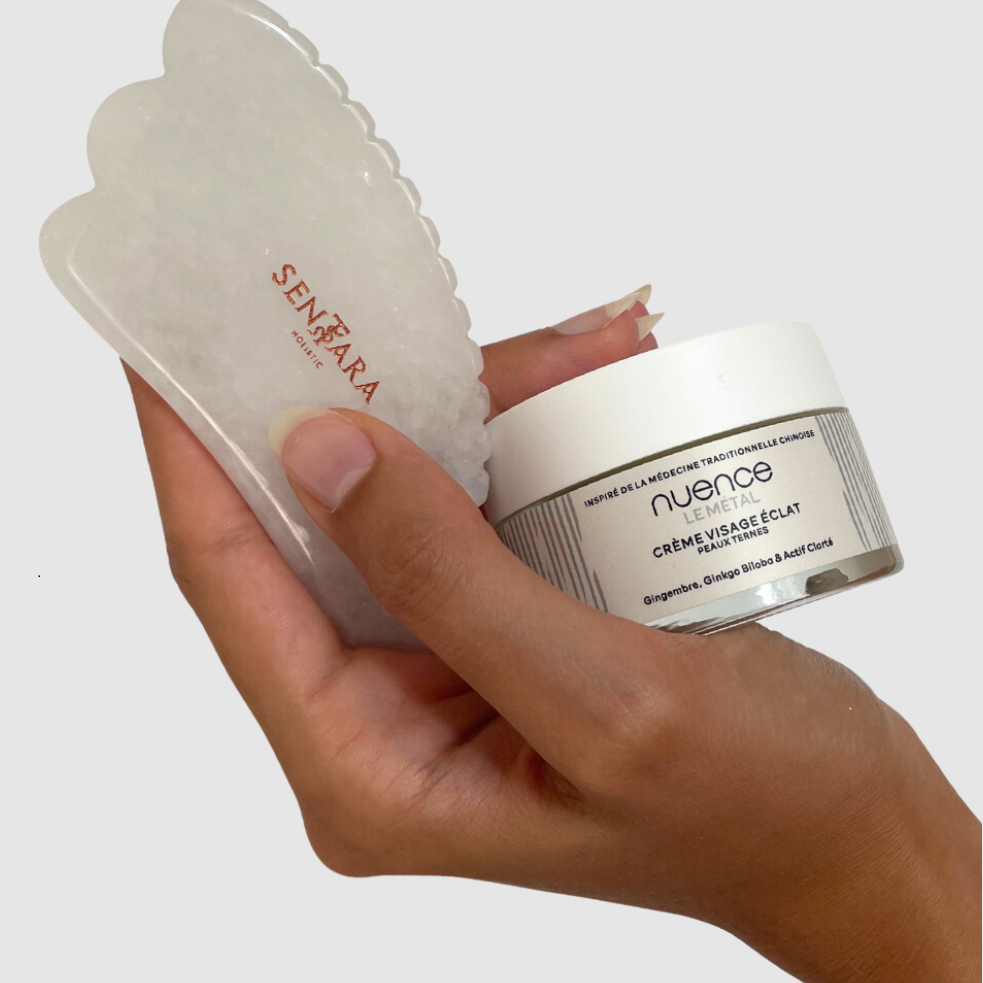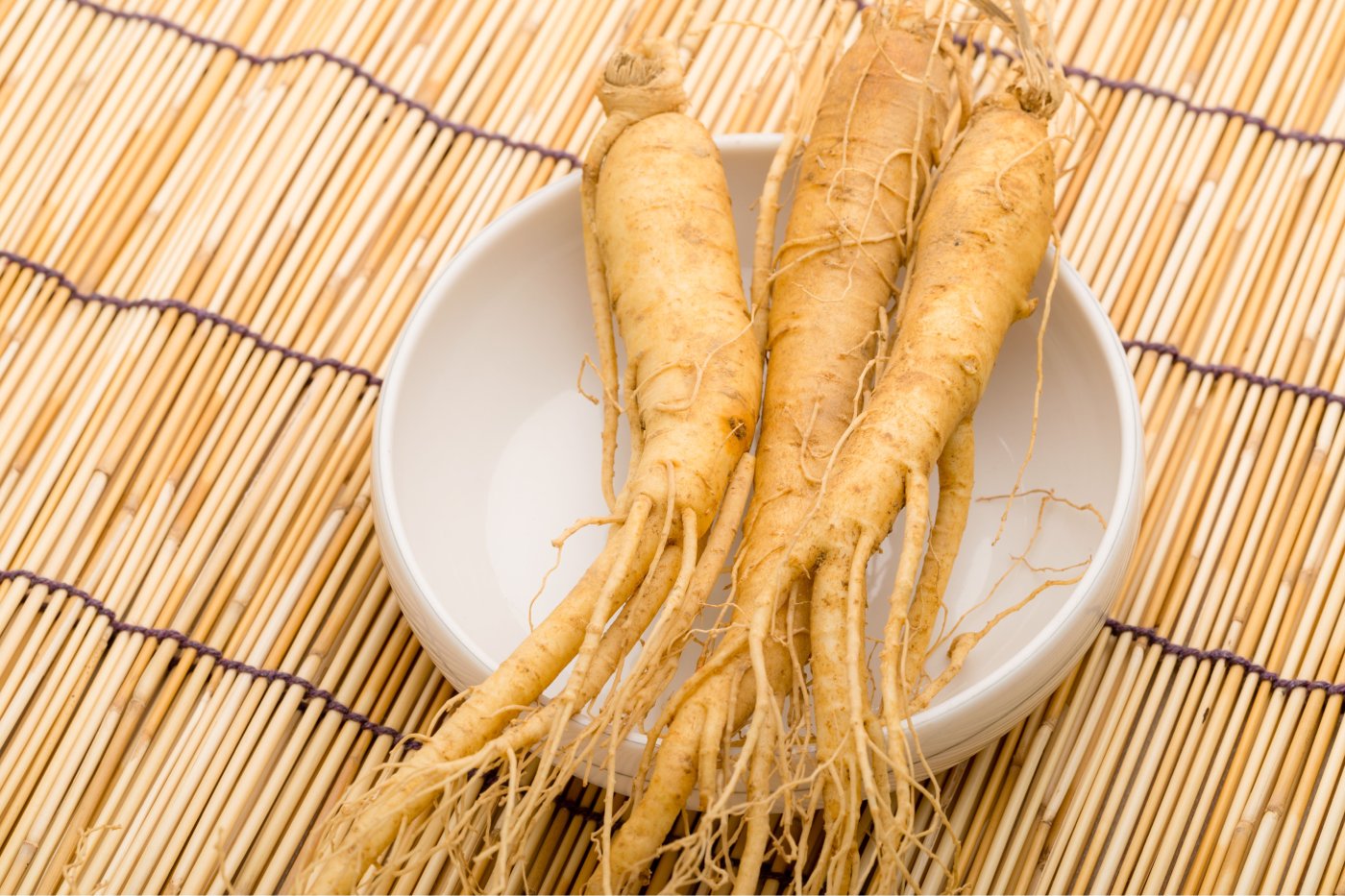To celebrate the launch of our nourishing ginseng oil , the Nuence-MTC team invites you on a journey to the heart of a legendary root— renshēn —that spans centuries and medicines. A symbol of vitality in Chinese pharmacopoeia, ginseng embodies the intersection of tradition, science, and holistic care. In this article, we explore its history, cultivation secrets, health benefits, and its essential role in our formulas.
A thousand-year-old root at the heart of traditions
Ginseng, or rénshēn in Chinese — literally “man-root” — has been used for over 5,000 years in Traditional Chinese Medicine.
Its anthropomorphic form has earned it a symbolic place in Asian pharmacopoeias, considered to be the crystallization of the essence of heaven and earth.
In ancient texts such as the Shennong Bencao Jing , it is described as a universal tonic, capable of strengthening the five organs , calming the mind, prolonging life and stimulating vital energy ( Qi ).
🌿 Ginseng varieties and their cultivation
There are several types of ginseng:
- Panax ginseng (Asian or Korean red ginseng): stimulant, tonic, very rich in ginsenosides.
- Panax quinquefolius (American ginseng): milder, soothing, used for chronic fatigue.
- Siberian ginseng ( Eleutherococcus senticosus ): related plant, but not of the genus Panax .
Growing ginseng is demanding:
It grows in the shade, in humid and acidic undergrowth , with a growth cycle of 5 to 6 years when the root has reached its energetic and medicinal maturity. Harvesting is done in autumn , a period when the plant enters vegetative rest and concentrates its forces in the root.

After harvesting, the root is simply cleaned and dried at low temperature or in the sun , without cooking or steaming. This process preserves its natural color (white to beige) and preserves all of its active ingredients in synergy. White ginseng is considered to be the unprocessed form of Panax ginseng , gentler, more balancing, and often recommended for prolonged or preventative use.
Red ginseng is obtained by steaming and drying, which increases its concentration of active ingredients. This ancestral process is practiced particularly in South Korea , where red ginseng is considered a national treasure . It is then used in decoction, extract or integrated into regenerative treatments.
🔬 A root with a remarkable bioactive composition
Ginseng ( Panax ginseng ) is distinguished by a rare molecular richness: it contains more than 30 types of ginsenosides , saponins specific to this plant, responsible for its adaptogenic, antioxidant and neuroprotective effects. In addition, it contains polysaccharides , essential amino acids , B vitamins (B1, B2, B3, B5, B12) , as well as vitamins C and E , which strengthen cell regeneration and skin protection. It also contains minerals and trace elements (zinc, selenium, iron, magnesium), enzymes , organic acids and even plant sterols , which contribute to hormonal balance and metabolism.
🔬 Why is ginseng an adaptogenic plant?
Ginseng is classified as an adaptogenic plant , meaning that it helps the body adapt to stress , regulate physiological functions and restore balance .
As mentioned in our previous article on this subject , they are plants capable of inducing a state of increased resistance in the body, allowing it to counteract stress signals and adapt to exceptional effort. Regulatory, they stimulate tired organisms, but without exciting, and they calm overly nervous people.
As a result, they support the general condition and endurance of the body.
Ginseng, in particular, has a recognized effect on:
- The adrenal glands and cortisol production
- The nervous system , by modulating neurotransmitters
- Immunity , by strengthening natural defenses.
📜 Its place in Chinese pharmacopoeia
Ginseng ( Ren Shen ) holds a central and prestigious place in Chinese pharmacopoeia. It is classified as a superior remedy, meaning it can be used safely over the long term to strengthen vitality, prolong life, and harmonize bodily functions.
Category : Qi (vital energy) tonic
Nature : Slightly warm
Flavor : Sweet and slightly bitter
Target organs : Spleen, Lung, Heart
Main functions :
-
-
Tonifies the original Qi ( Yuan Qi )
-
Strengthens the Spleen and Lungs
-
Generates organic fluids
-
Calm the mind ( Shen )
-
Promotes recovery from illness or exhaustion
-
Ginseng is often the Emperor ingredient in formulas, that is, the one that acts directly on the main pathology.
Some emblematic master formulas
| Formula | Main indication | Role of ginseng |
|---|---|---|
| Si Jun Zi Tang (Decoction of the Four Gentlemen) | Tonifies the Spleen and Digestive Qi | Main ingredient for strengthening Qi |
| Ren Shen Bai Du San | Treatment of external syndromes with weak Qi | Supports immunity and recovery |
| Shen Fu Tang | Yang Deficiency with Qi Collapse | Strengthens Qi and Yang, often in an emergency |
| Bu Zhong Yi Qi Tang | Qi deficiency of the medial focus, ptosis | Tonifies Qi and raises Yang |
| Gui Pi Tang | Qi and Blood Deficiency with Insomnia | Nourishes the Blood and tonifies the mental Qi |
| Shi Quan Da Bu Tang | General deficiency of Qi and Blood | Complete global toning formula |
🍲 Culinary use of ginseng
Ginseng is much more than a supplement—it's a functional ingredient that can be incorporated into recipes, beverages, and dietary preparations. Its use is both culinary and therapeutic, with a focus on energy nutrition.
In Asian cuisine:
- Samgyetang : Traditional Korean soup made with chicken stuffed with sticky rice, ginseng, jujubes, and garlic—reputed to strengthen the body in summer.
- Medicinal broths : In China, ginseng is sometimes added to pork or chicken broths to tonify the Qi.
- Slow-cooked dishes : Ginseng can be infused into slow-cooked dishes such as stews to release its active ingredients.
🍰 In modern kitchen:
- Cookies, muffins, cakes : powdered ginseng is sometimes found in energizing recipes.
- Ginseng milk : a sweet and nutritious drink, sometimes used by the elderly or convalescents.
🍵 Beverages and dietetic preparations
- Infusions : slices of dried root boiled in water, often with ginger or honey.
- Smoothies : Ginseng powder added to fruit, yogurt and seeds for a tonic effect.
- Ginseng coffee : A popular drink in Korea and Italy, with an adaptogenic touch.

💎 The recognized health benefits of ginseng
Ginseng is a plant with multiple virtues , validated by TCM and modern research:
| Benefit | Effect |
|---|---|
| 🌿 Vitality & energy | Tonifies Qi, reduces physical and mental fatigue |
| 🧠 Cognition | Improves memory, concentration, mental clarity |
| 💆♀️ Stress & mood | Regulates cortisol, soothes anxiety |
| 🛡️ Immunity | Stimulates natural defenses, reduces infections |
| ❤️ Traffic | Promotes vasodilation, supports the heart |
| 🔥 Libido & hormonal balance | Supports sexual function and hormone production |
| 🧬 Antioxidant | Protects against cellular aging and oxidative stress |
From a scientific and cosmetic point of view, ginseng contributes to:
-
Reduce oxidative stress , which accelerates cellular aging
-
Stimulate cell regeneration , via ginsenosides
-
Preserve the suppleness and elasticity of the skin , by limiting the loss of collagen
This results in visible action on:
-
Wrinkles and fine lines
-
Skin fatigue
-
Tissue relaxation
✨ Why did Nuence MTC choose ginseng?
At Nuence MTC, we have integrated ginseng into two signature treatments for its energetic and revitalizing properties :
🌞 Vitality Day Cream
- Ginseng acts as a skin tonic , stimulating microcirculation and radiance.
- It helps to awaken the skin , protect it from oxidative stress and strengthen its resilience.

🌿 Nourishing Ginseng Oil
- Used as a treatment or makeup remover, it offers a regenerating ritual .
- It supports the skin's energy balance, while deeply nourishing.

🟫 Ginseng and the Earth element
In Traditional Chinese Medicine , the Earth element is the center of balance—it nourishes, transforms, and stabilizes. It is linked to the Spleen and Stomach , organs that govern absorption, food processing, and the production of Qi.
Ginseng acts precisely on these functions:
-
It tones the Spleen Qi , the central source of daily energy.
-
It anchors the mind (Shen) by strengthening emotional stability.
-
It supports the digestive system — physical and energetic — by promoting better assimilation.
By associating it with the Earth element, Nuence-MTC places ginseng in a ritual of refocusing , inner solidity , and deep nourishment — both for the body and the mind.

To conclude:
Ginseng is the archetype of the vital tonic in TCM.
It has been used for thousands of years in formulas to support convalescence, strengthen immunity, prevent aging, rebalance emotions and Shen.
Its integration into Nuence MTC treatments is part of this tradition: awakening deep energy, nourishing the skin and harmonizing internal flows.








